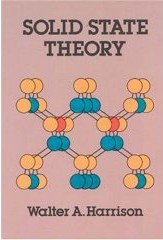
The particular type of grazing promoted by regenerative agriculture is management-intensive grazing, the holistic management of Allan Savory ( click for a discussion of Savory and his practices). In the video, Brown’s last principle is “animal impact.” In all versions of regenerative agriculture, this is crucial to making regenerative agriculture work, and the main way to get the animal impact is through grazing. These are basics of sustainable agriculture and when markets and cropping seasons allow, they should be used. Crop rotations and cover crops are, like the earlier principles, hard to disagree with. Brown implements his “diversity of plants” through intercropped cash crops and high-diversity cover crops that total 70 species.

It is shared by all the regenerative ag versions, and conservation ag, although the latter does not often refer to it as biodiversity, per se. The next principle is to increase biodiversity. If you can’t use herbicides, it is very difficult to always keep the soil covered with either dead crop residues or living plants. They are also the two versions that explicitly ban synthetic pesticides and fertilizers. It is interesting that the climate-change and organic versions do not include a principle related to protecting the soil, at least explicitly (see Table 1). Like principle #1, this is one that few will disagree with, but which is hard to implement with crops like potatoes or carrots, because they grow underground and require tillage to harvest them, and with small-seeded vegetables, because they require precise shallow planting which is difficult to achieve with crop residues on the soil surface. Related to this principle is Brown’s #3, “living plant roots in soil as long as possible.” I think the idea is that the soil will always be covered if there is no tillage and there always a living plant growing. Principle #2 (and #3) Protect the soilīrown says the second principle of regenerative ag is “armor on the soil surface.” Keeping the soil covered to eliminate erosion is important because you can’t build soil while it is blowing or washing away. Not much new here, but not anything to disagree with. I see it as one of the predecessors of regenerative agriculture.

This set of principles grew out of the development of no-till in the 1970s. This is also the main focus of conservation agriculture. Brown’s #1 principle is “least amount of mechanical disturbance possible.” To achieve this, they all agree that farming should minimize or eliminate tillage. While some versions extend this to restoring animal health, human health, and communities, it all starts with soil health. Principle #1 Minimize or eliminate tillageīuilding or rebuilding soil is the primary focus of “regenerative” practices, all the versions agree on this (see Table 1). Principles, Practices, and Restrictions of Regenerative Agriculture Versions, compared with Conservation Agriculture. Table 1 shows Brown’s principles/practices compared to these other versions, and to conservation agriculture.

Project Drawdown includes regenerative ag in its plan to reverse global warming, and California State University at Chico has their regenerative ag initiative PDF. Rodale and partners offer their strictly organic version with a new certification program attached. In my past explorations of regenerative ag, I had found that there are multiple versions of these principles, each with a different flavor. However, Brown’s version of regenerative agriculture is not the only one. In the video, he answered my first question, “what is it?” by giving five principles of regenerative agriculture. Brown spoke of his 20+ year journey from a conventional row crop farmer to a regenerative farmer. Our meeting organizers invited him to speak, but he is booked a year out, so we watched the video. Regenerative ag = Conservation Ag + Holistic Grazing + (Organic Farming) + (Exaggerated Claims)īrown is a good speaker, in high demand for conferences and events. Brown farms near Bismarck, ND, and has become the American face of regenerative agriculture in the past decade. What is regenerative agriculture? Why is it different from sustainable agriculture? And how do I reconcile what practitioners of this system are claiming with the scientific evidence? These were all going through my mind when, a couple weeks ago at an advisory committee meeting of the WSU Center for Sustaining Agriculture and Natural Resources, we watched a YouTube video of Gabe Brown’s TEDx talk in Grand Forks, North Dakota.


 0 kommentar(er)
0 kommentar(er)
